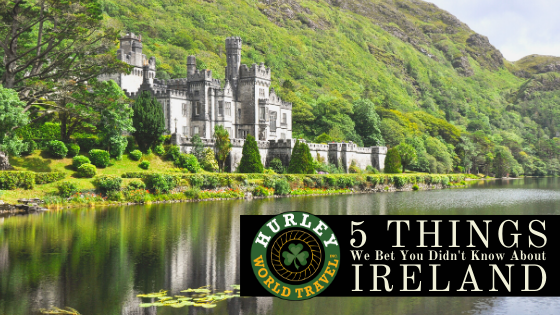Ireland has a long history; archaeologists have dated the first known signs of human habitation to 10,500 BCE or 12,500 years ago. The Gaelic culture and society had developed by the first century CE, and Ireland’s people had converted to Christianity roughly four hundred years later. As a result, there are many obscure facts about Ireland.
Here are some facts you probably didn’t know about Ireland:
1) St. Patrick wasn’t born there.
While historians aren’t entirely sure where St. Patrick came from, they believe he was born somewhere on mainland Britain, most likely Wales. When he was 16, Irish pirates kidnapped him and brought him to Ireland. He remained a prisoner for six years before he escaped and returned to his family. He then spent 15 years as a priest and returned to Ireland as a missionary.
2) Guinness is older than the United States.
Arthur Guinness began brewing ale at the Saint James’ Gate brewery in Dublin in 1759. He signed a 9,000-year lease for the brewery on December 31, 1759. Guinness now produces 10 million pints in Dublin every day.
3) The submarine was invented by an Irishman.
John Phillip Holland (1840 – 1914) was an Irish engineer from West County Clare. He was originally a member of the Order of the Irish Christian Brothers and became a teacher. He also studied science, particularly astronomy and flight mechanics. In 1891, he published “The Practicality of Mechanical Flight.”
Holland followed the news about the American Civil War intently and was particularly interested in their naval battles. He was especially impressed by the Confederate semi-submersible “Hunley,” which sank a much stronger ship in 1864.
In 1873, Holland immigrated to Boston. Two years later, he submitted his first submarine designs to the US Naval Department. At first, the Navy rejected Holland’s designs as impractical, but they eventually accepted subsequent designs. The Japanese and British Royal navies also bought Holland’s designs.
Holland hoped that the existence of submarines would deter naval warfare. He also hoped that the submarines would be used simply to incapacitate ships. Instead, they were used to lethal effect during World War I.
4) The fourth-largest stadium in Europe is in Ireland.
Dublin, the capital of Ireland, is also home to Croke Park, the headquarters of the Gaelic Athletic Association, which promotes traditional Irish sports like rounders, Gaelic football, and hurling. Croke Park can accommodate 82,300 sports fans. Only three other stadia in Europe have larger capacities: Olimpiysky in Ukraine, Wembley in England, and Camp Nou in Spain.
5) Ireland is the only country with a musical instrument as its national symbol.
The harp, not the shamrock, is Ireland’s national symbol. Trinity College in Dublin houses the oldest known existing harp, which dates back to at least 1300. The Irish government adopted the harp as Ireland’s national symbol when the country separated from the UK in 1922. The harp now appears on coins and passports. Guinness also uses a harp as a logo, but their harp points in the opposite direction from that of the official Irish harp.







Leave A Comment